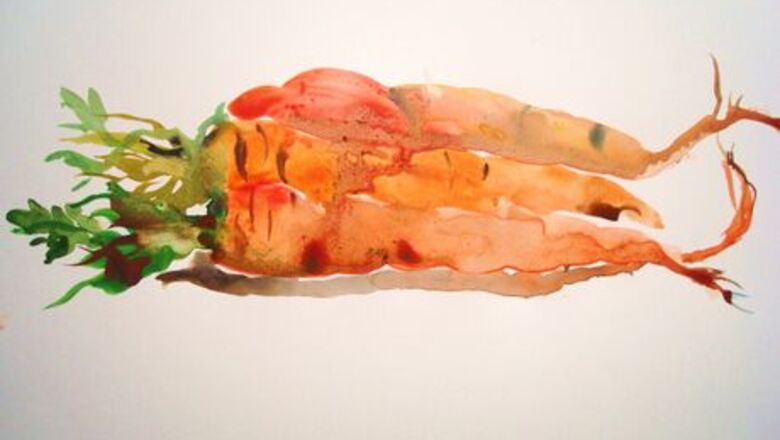
views
X
Research source
It is terrible and makes you feel hopeless. However, getting inspired enough about a subject to use it for art can be easy when you see how a theme has already been used. Getting a spark of inspiration is the start, and then you can take as much time as you need to give your ideas life on the page. This article will show you a couple of ideas you can use to make your next masterpiece!
Take a fresh look around the house.
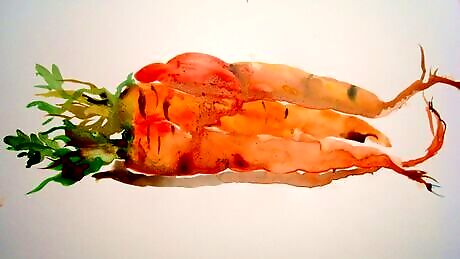
When we live closely with things, we tend not to see their unique qualities anymore. Open the veggie drawer of the refrigerator. Look for shapes and colored things that can be put together into a simple arrangement. Objects relating to one another can surprise us. Gather objects, fruits, and veggies and make a still life. Look at still-life compositions on the internet. Artists have forever assembled and grouped things to paint. This way of working is great in that it is non-moving and can be returned at another time to be used as a subject for art.Cherrglass.jpg
Decide not to use realistic colors on objects.
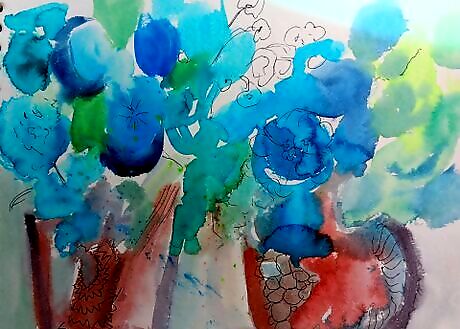
As an artist, you can do what you wish with the view. The landscape outside your window might be bland, but you are free to interpret and use all materials that suit you. The average paint box contains the primary (yellow, red and blue) and secondary colors (orange, violet/purple and green) and a neutral brown, white and black are also included. From these components, a range of new colors can be made. Just relate to the basic colors as raw materials for making other colors.
Draw from a houseplant or use an image of potted plants from a magazine as inspiration.
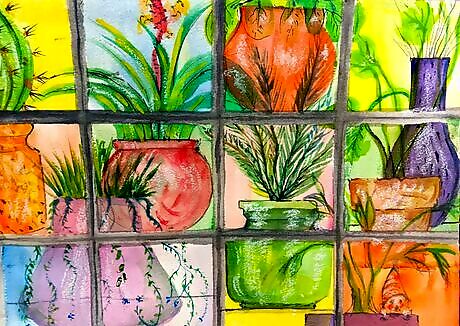
The greens of plants can speak volumes. You can try replicating some of them as another way to explore and learn by doing. You can even make up your own plants, flowers or whole gardens. All you need is paper, drawing and/or painting tools and away you go! Nothing is easier than doodling, mindlessly working the pen or pencil with little thought behind your creation. Just play and let the drawing implement take you for a stroll. In this instance however, you will be prompting yourself with words and allowing images to gather freely. The next step is putting lines and shapes down on your paper.Ink flowes.jpg
Refer to a photograph.
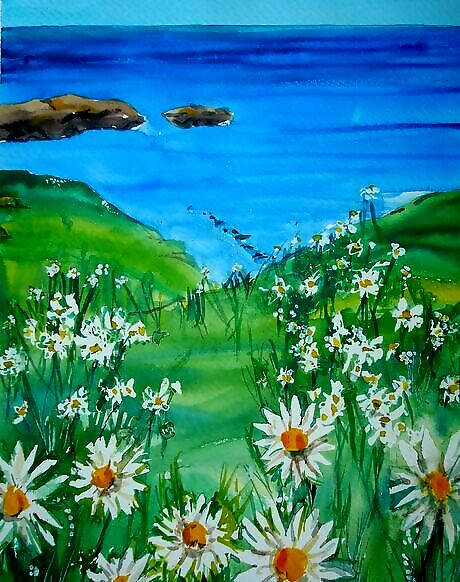
Approach your collected photos in a new way. Think of them, not as particular people, places or things, rather as a collection of shapes/forms, colors and lines.
Pretend you've done a notable feat and draw/paint it from that vantage point.
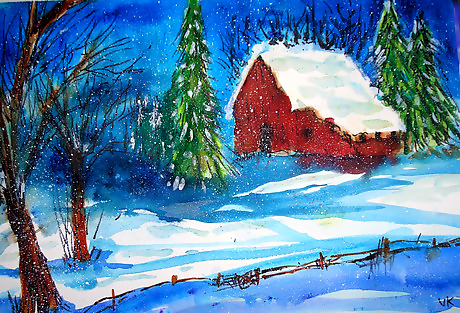
A new point of view can make a big difference in how you see things. This vantage point puts you above a subject and closer to it. It's also called a bird's eye view and is likely to have you looking with new eyes. Examples include climbing a tree, going surfing etc.
Get cheffy and bake a pie.
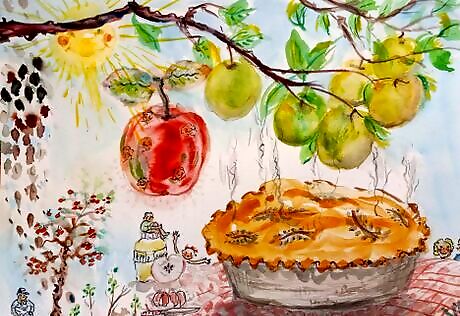
Create any food you wish. Allowing yourself to express creativity in a different way is liberating. While you focus on cooking, your mind will be going off on its own to composing an artwork on paper.
Depict your childhood.

Show how it felt to be playing outdoors. Fortunately, the games and interests we had as children are universal and most often a joy to remember. Did you play active games, use sporting equipment or enjoy a certain time of day best? Bring those memories forward and show them on paper through art.
Show how a glass object looks.
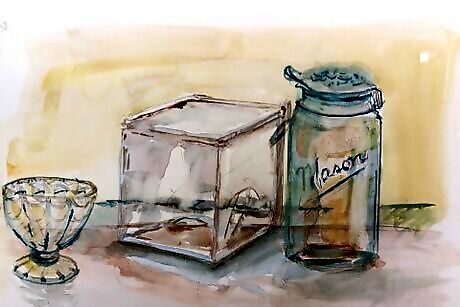
Explore what is special about clear glass. It is transparent, distorts what is seen through it and to draw or paint it relies most heavily on what goes on at the object's edges, top and base. Study actual clear glass items. Then, do research on the internet or on this platform to see how you might depict it.
Draw or paint a pet.
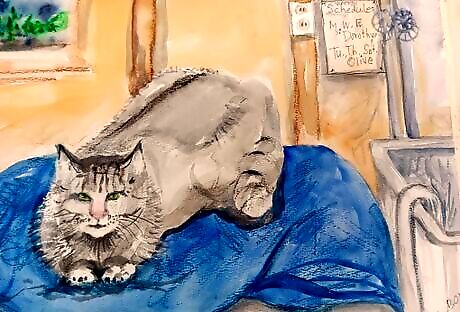
Draw your own, borrowed, or imagined. Animals are engaging and a wonderful subject. Granted, if you don't catch them sleeping, they can be challenging. Sketch what you can. Then, move to a new area on the page and begin again. The results can show in a frenetic and abstract way the concept of a figure or animal in motion. Again, don't fear attempting anything under the sun.
Feature a curtain.
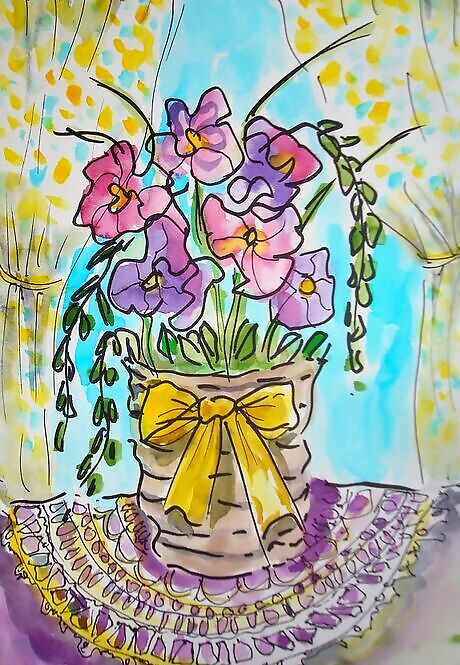
Do a pen sketch of a scene featuring a doily or a lace curtain. Anything with a strong repeat pattern. Check wikiHow or the internet for specifics on how to paint lace.
Observe an evening scene.
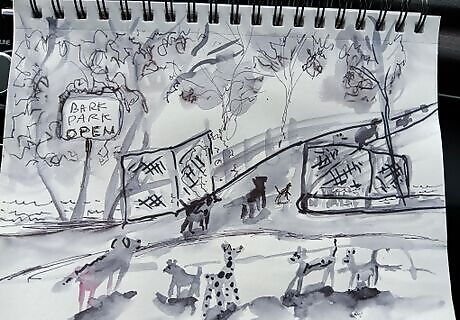
Wait until dark and observe an evening scene. Find an actual one lit only by indirect moonlight. This is fun in that the darkest part of the painting will be the sky and you can paint that area very dark. Many layers might be required to achieve the effect of nighttime. After applying a layer, let it dry thoroughly before adding another coat of dark paint. Allow the piece to get truly dry before painting on it again, up to three times.
Show machinery.
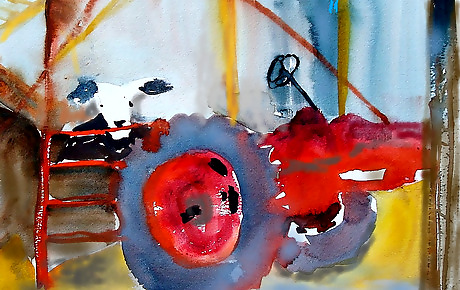
Draw or paint a complicated piece of machinery. This is challenging because it might require a lot of observing, sketching, erasing and re-drawing until you get it the way you want it. The machinery can be the center of interest or make up the theme of the painting. The background can then be kept simple.
Go abstract.
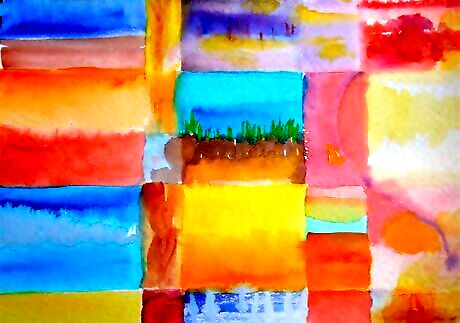
Use a straight-edge and grid your paper and paint the scene as it looks behind the squares. You can also use the squares to paint various views of an object. You can just color them to make a stylistic and abstract result.
Play with colors.
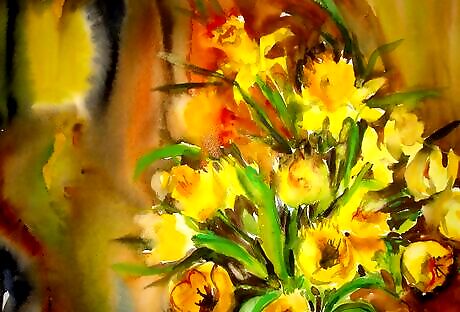
Do an art piece using closely related colors. Colors next to each other on the color wheel are called adjacent or analogous colors. The piece will be unified by similar colors.



















Comments
0 comment